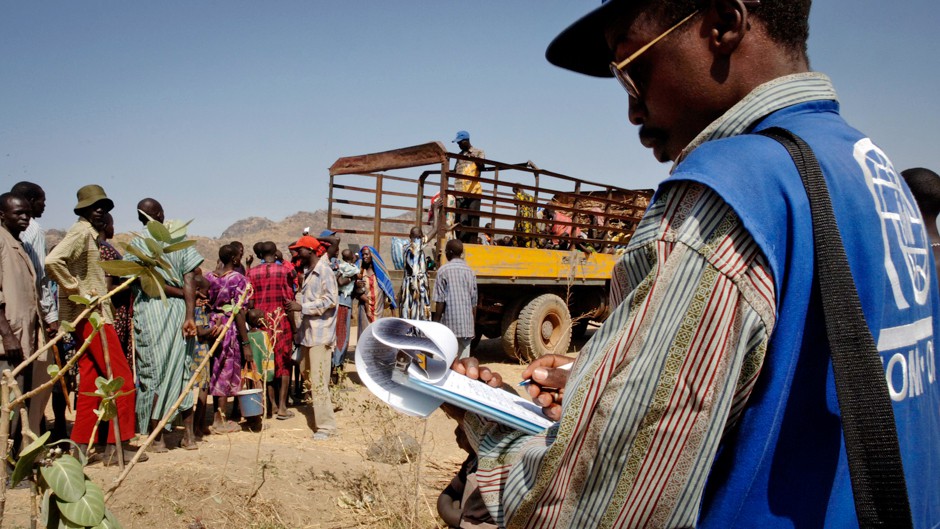HERE’S HOW TO DO IT.
How to cover migration and displacement related to climate?
In the face of climate-induced migrations, journalists hold the power to transform the narrative. By covering these migrations constructively, they can highlight stories of adaptation and resilience, promote empathy, and drive the development of sustainable policies that support affected communities.
By Mactilda Mbenywe
The World Bank estimates that climate change could displace 143 million people in Latin America, sub-Saharan Africa, and Southeast Asia by 2050. Oxfam puts the figure even higher, predicting a million people per year will be displaced by 2050. But as Manuel Marques Pereira, Head of Division for Migration, Environment, Climate Change, and Risk Reduction at the International Organization for Migration (IOM), noted, the issue of numbers is delicate. An often-cited 2050 projection referred to potential migrants both within and beyond their home countries, across just a few regions, not globally. We must be precise in our language and cautious with projections to avoid sensationalism (UN Migration Agency).
Pereira emphasized that these are not just statistics; they are lives torn apart, families broken, and futures stolen. From the drought-stricken plains of Somalia to the sinking islands of the Pacific, climate change is forcing people to leave their ancestral lands. They flee not from war or persecution, but from a homeland becoming increasingly uninhabitable.
Why should newsrooms prioritize climate migration?
Climate migrants are not just victims; they are resilient survivors, fighting for a future. They are the farmer forced to abandon parched fields, the fisherman whose livelihood is disappearing beneath the waves, and the mother searching for safety for her children. Their stories are ones of loss and hope, of despair and determination. As Pereira emphasizes, the media should focus on the positive contributions migrants make to society, rather than portraying them as a problem. “There would be no art without migrants,” he notes. By sharing human stories, we can build empathy and challenge stereotypes, highlighting the diversity and strength of those affected.
Humanity: At its core, journalism is about telling the stories that need to be told. Climate migration is a humanitarian crisis of epic proportions; those affected have a right to have their voices heard.
Relevance: Climate migration is already reshaping our world and our societies. It’s not just an environmental story; it’s a political, social, and economic one.
Impact: By shedding light on this issue, journalists can inspire action. We can hold leaders accountable, challenge policies, and give a platform to those fighting for climate justice.

How to constructively cover climate migration
Human-centered reporting: Focus on the personal stories of those affected, highlighting their resilience, adaptability, and contributions to their host communities. Avoid portraying climate migrants solely as victims; instead, emphasize their agency and strength.
Nuanced language: Be precise with your terminology. “Climate migration” is a broad term encompassing various forms of mobility, from internal displacement to cross-border movement. Clearly distinguish between voluntary and forced migration, and avoid sensational terms like “climate refugee” if they don’t legally apply.
Collaboration: Partner with local journalists, researchers, and community organizations in the most affected regions. They bring invaluable context, contacts, and insights. Collaborations can also help amplify marginalized voices and challenge stereotypes.
Solutions-focused: While acknowledging the severity of the crisis, highlight potential solutions and success stories. Showcase communities adapting to climate change, innovative policies supporting migrants, and initiatives promoting climate resilience and justice.
Historical context: acknowledge the historical responsibilities of different nations in contributing to climate change and the legacy of colonialism. This context is crucial for discussions around climate justice and equitable burden-sharing.
Data with caution: Use migration projections and statistics judiciously, given their uncertainties and controversies. Be transparent about sources and methodologies, and avoid sensationalizing numbers that may be imprecise or outdated.
Regular coverage: Climate migration shouldn’t be a one-off story; it deserves ongoing, in-depth reporting. Allocate dedicated resources and consider appointing specialized correspondents or teams to cover this complex, evolving issue.
Training and capacity building: Offer journalists training and workshops on climate migration, ensuring they understand the scientific, political, and human dimensions. This expertise will enhance the accuracy and impact of reporting.
Amplify marginalized voices: Prioritize the voices and perspectives of those most affected by climate migration, including women, youth, indigenous peoples, and the global south. Challenge the dominance of Western, elite viewpoints in the media discourse.
Constructive climate migration news coverage: case studies
Menu



